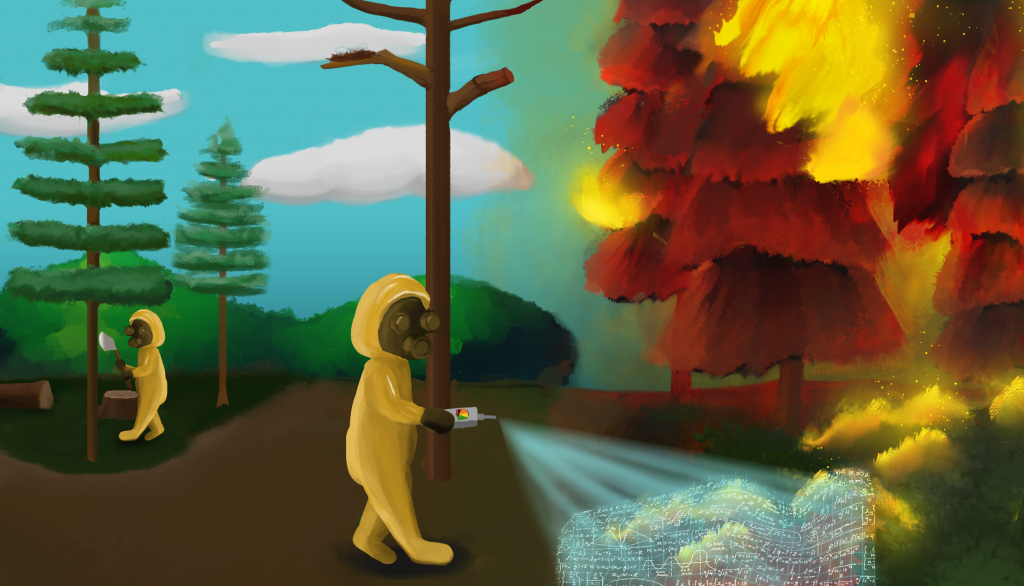Wildfire risk: Using statistical models to identify cost-effective strategies

While wildfires remain an unpredictable threat, researchers at Texas A&M University are attempting to mitigate that uncertainty by using mathematical and statistical models to identify the most cost-effective and efficient strategies for reducing wildfire risk through vegetation removal or fuel treatment strategies.
Texas A&M is represented by Lewis Ntaimo, professor and head of the Wm Michael Barnes ‘64 Department of Industrial and Systems Engineering, and Texas A&M AgriLife Research’s Jianbang Gan, forest management and economics professor in the Department of Ecology and Conservation Biology, College of Agriculture and Life Sciences.
The two Texas A&M researchers received $280,000 of a $550,0000 National Science Foundation grant for this interdisciplinary, collaborative project with Oleg Prokopyev in the Swanson School of Engineering at the University of Pittsburgh.
Ntaimo, who serves as the project’s principal investigator from Texas A&M, specializes in systems modeling, mathematical optimization and simulation with application to wildfire management. Gan’s contributions will center on forest economics and management and response strategies to environmental disturbances like climate change and wildfires.
The diversified expertise from the Texas A&M project leaders will help produce outcomes that provide landowners and at-risk communities with alternatives to other, potentially more costly, methods of wildfire prevention or management.
“Fire is a big concern in Texas, but fuel treatments and fire protection like firefighting are very expensive,” Gan said. “With this research, we’re trying to come up with ways to minimize fuel treatment and firefighting costs; and most importantly, lessen damages from fire to protect human life, property and natural resources.”
When left unmanaged, vegetation fuels wildfire ignition and spread. Removing that vegetation through fuel treatment methods such as prescribed burns, grazing and tree thinning can help reduce wildfire risk. However, these management methods come with a price.
“Given the ongoing wildfires devastating the western U.S., our research project focusing on fuel treatment planning is very timely indeed,” Ntaimo noted. “The main goal of our project is to develop mathematical models that will help fire managers and planners with fuel treatment options to minimize the occurrence of potentially large-scale wildfires such as the ones we are seeing today.”

